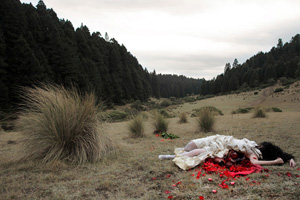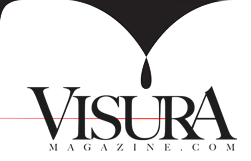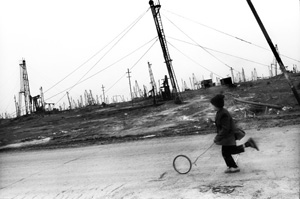
RENA EFFENDI | Pipe Dreams
Issue 08
My first job, at the age of 19, was as a translator for the Azerbaijan International Oil Company, a consortium of some of the world's largest oil producers. This gave me financial independence, as the oil industry was the most lucrative employer for educated youth in Baku. I was considered one of the lucky few—those that managed to benefit from the oil boom. Having gained an inside perspective, I decided to look outward as I began to photograph in 2001, focusing on the oil industry’s effects on ordinary people’s lives in my country.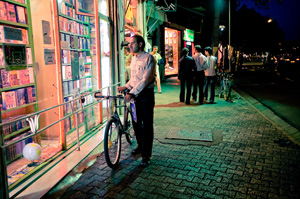
MOVING EAST | James Longley
Issue 08
After a decade spent mostly in Russia I decided I needed to make a film in the Gaza Strip. It was 2001, just after the New Year, and the second Palestinian uprising was well underway. Ariel Sharon was about to be elected Prime Minister of Israel. At the Erez crossing, an IDF soldier looked skeptically at my cameras and press ID, then waved me through into the bone chilling rain and Gaza. It was my first time in the Middle East; it was my first time in a conflict zone. But it was also the start of a chapter of my life which has not yet ended.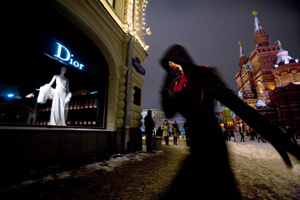
GERD LUDWIG | Moscow Never Sleeps
Issue 08
My personal connection with Russia had already begun, when I was a young child growing up in Germany after World War II. In the darkness of our cramped, post-war space that served as bedroom, kitchen and living room all in one, I would listen to the sad, soothing voice of my father as he conjured up images of endless winter landscapes; of soldiers battling their way through snowstorms; and of people hiding from them in stables and barns.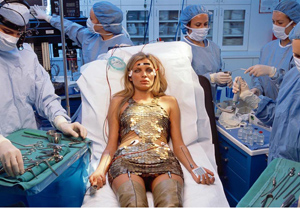
LAUREN GREENFIELD | Deconstructing Fashion
Issue 08
Fashion has been a recurring theme in my photography, weaving itself through my stories and pictures in conscious and unconscious ways. When I began my career as a documentarian, I did not intentionally pursue fashion as a discreet focus. I photographed youth culture and studied gender and body image. In that context, fashion was always an integral part of the narratives’ fabric. I photographed girls and women across the world as they navigated their respective social pressures, and struggled to define their individuality.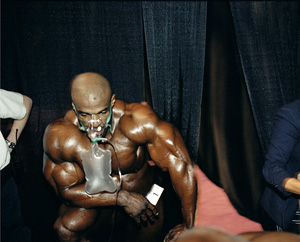
ZED NELSON | Love Me
Issue 08
Beauty is a $160 billion-a-year global industry. The pursuit of body improvement has become like a new religion. We live in a society that celebrates and iconizes youth. The promise of bodily improvement is fuelled by advertising campaigns and a commercially driven Western media, reflecting an increasingly narrow palette of beauty. The modern Caucasian ideal of beauty has been packaged and exported globally, and just as surgical operations to Westernize oriental eyes have become increasingly popular, so has the beauty standard become increasingly prescriptive.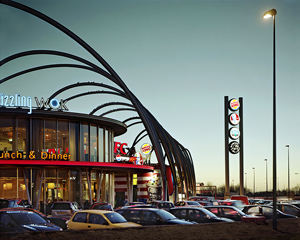
JOSHUA LUTZ | Am(star)dam
Issue 8
Windmills from the roof of an abandoned building continue forever into the distance. Water quietly flows even through the smallest towns surrounding the city. In some areas the canals are still frozen, but the ice is far too thin to support the would-be skaters quietly sitting on a bench. A few weeks after my son Hudson was born, unsure of what to expect, we wrapped him up and headed from New York to Amsterdam. I was commissioned to commemorate the 400th anniversary of Henry Hudson leaving Amsterdam for New York; somehow this task of getting everything through security seemed far more daunting than anything Henry Hudson could have ever encountered.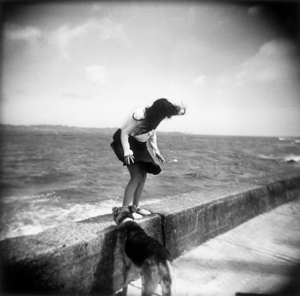
BRIGITTE GRIGNET | Chiloe: La Cruze Del Sur
Issue 06
In 1974, I was six. I was in Belgium and I had never heard words such as exile, torture, dictatorship, junta, or desaparecido. My mother had a pupil, Pilar, a Chilean girl who came to live in our small industrial suburb with her family to escape the regime of dictator Augusto Pinochet, who had seized power in a military coup in 1973. Everything about her was unfamiliar to me: her language, why she had to leave her country…even her name. I imagined other stories, other lands, and other people, images that stayed with me for a long time.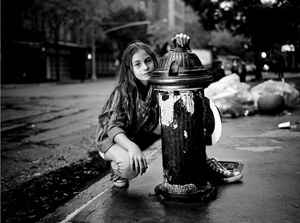
DONNA FERRATO | The Tribeca Collection
Issue 07
The Tribeca Collection was born from a capacity for capturing the meaning of life, in all its gritty reality. I value my neighborhood – its history, the streets, the old buildings and artifacts, moonlight across the cobblestones, smells of spices, and sounds of construction —seeing how things look as they go up.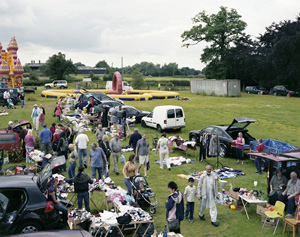
SIMON ROBERTS | We English
Issue 07
I was born in 1974 in a South London suburb. My mother, a Northerner from Cleator Moor in Cumbria, met my London-born father while they were both working in the capital. My formative years were spent in Oxted, a provincial town in Surrey’s commuter belt. Holidays were often spent walking in the Lake District, usually in the rain, or visiting my grandparents in Angmering-on-Sea, a retirement town on the South Coast. My memories of holidays are infused with very particular landscapes: the lush greenness around Ennerdale Water, or the flint-grey skies and pebbles of Angmering’s beaches.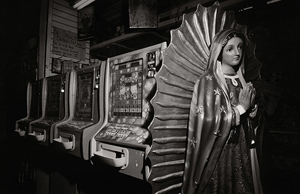
JOHN SEVIGNY | El Muerto Pare El Santo
Issue 07
This collection of photographs represents the culmination of a complex web of influences including Baroque painting in Italy and Spain; my Afro-Caribbean faith; my own, sometimes difficult character; and my memories of my father, who died more than five years ago. I came to photography by way of painting, in particular Los Borrachos (1629) by the legendary Spanish Baroque painter Diego Velazquez. I had always taken pictures; I made my first black-and-white darkroom print when I was 12.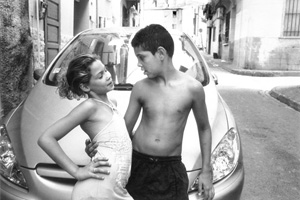
JOAN LIFTIN | Runaway
Issue 07
When I was growing up in Brooklyn my aunts would ask me what I wanted to be when I grew up. A runaway, I would say. I’d like to hit the road.I knew all about hitting the road . I’d seen movies in which spunky young women would walk, hitch, ride the rails across the country having adventures and meeting lovable scoundrels who had been places and seen things.
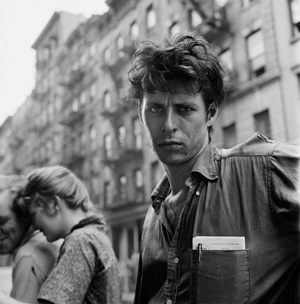
LARRY FINK | The Beats
Issue 07
Imagine the years, which have passed between these pictures and now. Here I am, graying, experienced, with hope and strain and some fame; with the Octopus, its social tentacles flailing around themselves; the adult that I am, as convoluted as any adult is…through long streets of gain and short bursts of pain. How many cows can one milk in a day?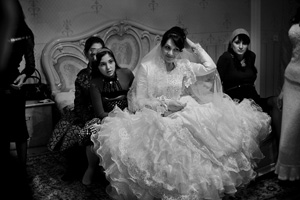
ANDREA BRUCE | Ingushetia’s Decisive Moment
Issue 07
This is the start of a story, one that has taken place in many countries under the influence of many different religions. It is a story of people, torn by politics because of their honest yearning for hope, who are left vulnerable to the teachings of extremism. It is an old story, one I have personally seen unfold in Iraq and Afghanistan—which is why it frustrates and intrigues me. It seems to go hand-in-hand with war.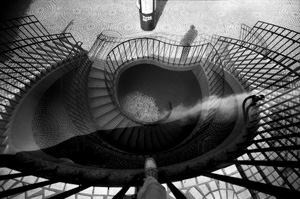
KEN VAN SICKLE | Second Site
Issue 07
Most photographers, by grace of several kinds of mistakes, discover double exposures on their contact sheets. They are mostly annoyed or distressed that the error spoiled the photo they were after. Some, including myself, find them to be fascinating.In 1959, I purposely made some double exposures. With the old C-model Leica rangefinder cameras, one could reset the shutter without advancing the film.
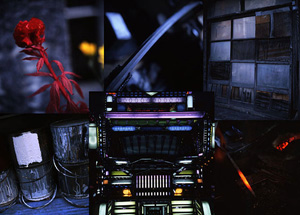
MIGUEL RIO BRANCO | Tokyo
Issue 07
These images are just some ideas roaming around in my mind. I was looking for contrasts in the city of Tokyo. I believed I could find them there, but my mind kept reminding me of Japanese movies I had seen in the past: Mizoguchi, Kurosawa, and Kobayashi…Japanese architecture, gardens, and the incredible food. Also, the amazing Utamaro, painter of women (who is also the hero of a movie by Mizoguchi) came to mind.
JAMES KNIGHT-SMITH | A Series of Moments
Issue 6
I have often stood on the coast, looked out at the ocean in all weather conditions, and felt a great sense of calm. I have never asked myself why. I just know that water is incredibly relaxing to me. I have always wanted to capture this feeling in art and I struggled with this idea for a long time, first in drawings and later in photographs. It was by pure chance that one day last year I finally captured exactly what I wanted. I have worked on perfecting that style ever since.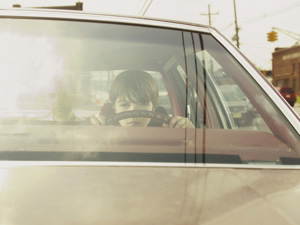
ACHIM LIPPOTH | Wrong Right Wrong
Issue 06
Usually children are very true to themselves and no one can force them to perform. This leads to an exciting challenge: how can a photographer get them to do what he or she wants in a picture? How can they play the roles a photographer needs but remain natural? These are the points which make the photography of children so interesting—finding ways to show the childrens' authenticity.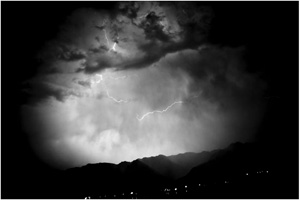
KASHMIR | Andy Spyra
Issue 06
I first came to Kashmir in the spring of 2007, at the end of a motorcycle trip across India. Instantly, I simply fell in love with the people, the light and the atmosphere of this remote part of the world.But as much as I love it, I dislike the valley's political situation.
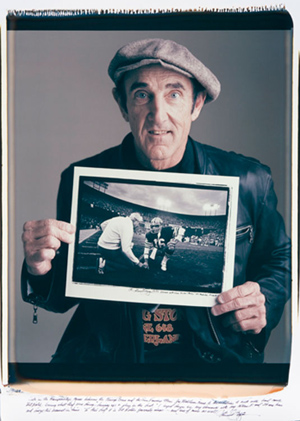
TIM MANTOANI | Behind Photographs
Issue 06
I began this series in December of 2006 in San Francisco. I had grown up in the Bay Area and I was home visiting my parents for the holidays. I took a day to rent a 20 x 24 Polaroid camera. I had seen the camera advertised for rent and had come to a point in my photographic career when I was thirsting to get back to working with a more tactile process. Being a commercial shooter in San Diego, my business had, like most, become nearly 100% digital. My background was in large-format photography, and I shot much of my early portrait work on 4-x-5-inch film. The process seemed more special than working in 35mm digital.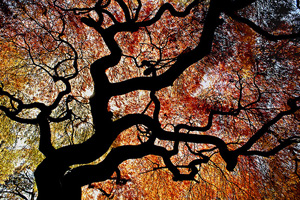
MARVIN E. NEWMAN | Untitled
Issue 06
I have BEEN A photographeR all my adult life and I love doing it. The act of creativity still moves me more than anything else. When you have truly been creative you know it. There is nothing more satisfying, and making this series of photographs of trees was one of those experiences.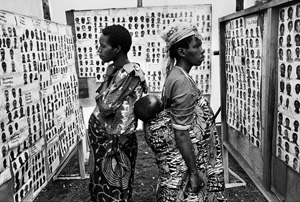
REZA | War and Peace
Issue 06
In my travels in war zones, natural disaster areas, places of sorrow and beauty, I have often been reminded of the tale told by Rumi, the 13th-century Persian sage. It is a tale known to many cultures, the tale of villagers who had never seen an elephant and are frightened when one comes near their village. The three men who are sent to examine the beast in total darkness come back with three completely different explanations of what it is. This is because each has only touched one part of the creature – an ear, a leg, its trunk – and mistakenly believes the single part is the whole of the animal. The different viewpoints lead to deep divisions in the community.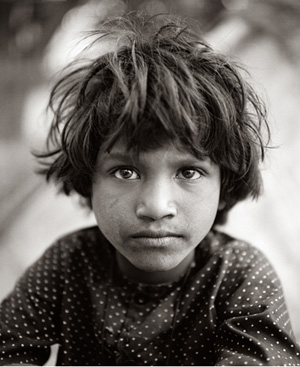
FAZAL SHEIKH | The Circle
Issue 06
VrindAvan, in northern India, is a place of exile for widows who have been put out onto the streets by their families because of superstitions that the women were responsible for their husbands’ deaths. When I first visited the small town, I knew little about the circumstances that had brought them there, where they lived, or their extreme poverty. In the following years I met some of them and listened to their stories of hardship, religious devotion and endurance.
Int’l Photography Awards Tribute | 2009
Issue 06
Featuring Nominees for the 2009: International Photographer of the Year, Deeper Perspective Award, and Discovery of the Year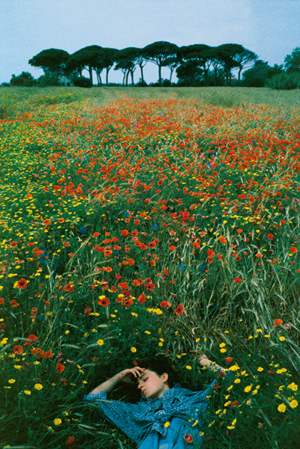
Lucie Awards, Honoree Slideshow | 2009
Issue 06
A tribute to the 2009 Lucie Award Nominees: Fazal Sheikh, Jean-Paul Goude, Gilles Peress, Marvin Newman, Reza, Ara Guler, and Mark Seliger.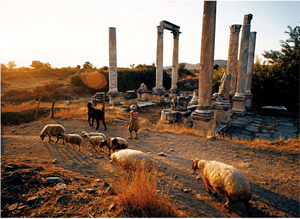
ARA GULER | Aphrodisias
Issue 06
APHRODISIAS, the most celebrated of the several ancient cities, is dedicated to the goddess Aphrodite. The city was situated in the village of Geyre, located in the district of Karacasu in Aydin Province. Sixty years of excavations have revealed ancient buildings of major importance in Aphrodisias. These include the Temple of Aphrodite; the Sebasteion; a stadium capable of seating 30,000 people, the best preserved example of such a structure in Turkey; the Tetrapylon; the Hadrian Baths; and the Odeon. Everything began by chance in the late summer of 1958.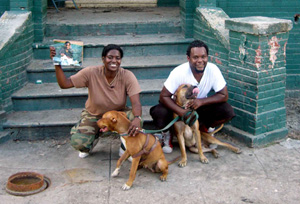
TIA LESSIN & CARL DEAL | Trouble the Water
Issue V
"What I got, I've been saving it, 'cause I don't want to give it to nobody local. This needs to be worldwide. Cause all the footage I've seen on TV, nobody got what I got. I got right there in the hurricane."This is how Kimberly Rivers Roberts introduced herself to us, two documentary filmmakers from New York City, when we met at a Red Cross shelter in Central Louisiana two weeks after Hurricane Katrina. She and her husband Scott had just survived the flooding of their city; the huddled in the attic of their two-story home and brought thirty friends and neighbors to safety.
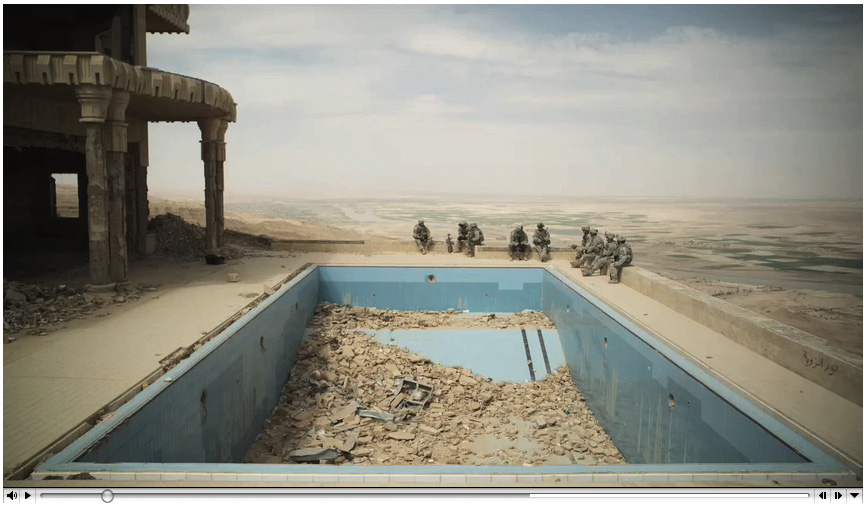
RICHARD MOSSE | Theatre of War
Issue 05
Theatre of War was shot from the columned poolside terraces and French windows of Uday Hussein's palace in the Jebel Makhoul mountain range in central Iraq. Uday's father, Saddam, and his brother, Qusay, had their own separate palaces in this complex overlooking the River Tigris.Destroyed by U.S. Airforce JDAM bombing in 2003, these spectacular ruins become an epic stage for US soldiers to gesticulate and exhibit themselves self-consciously within the theatre of war.
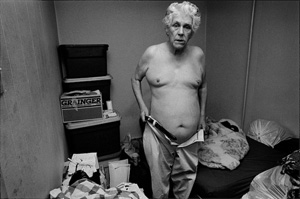
BRENDA ANN KENNEALLY | Fast Eddie
Issue 05
It was not until I took up photography in my early thirties that I was able to spend much time around my father. He battled depression, addiction and compulsion all of his life, as did his own father had done, and I am dutifully fulfilling the legacy he left for me. I too have inherited depression, and an addictive and compulsive personality.I learned everything I know in the rooms of twelve-step recovery programs, held in basements of anonymous churches.
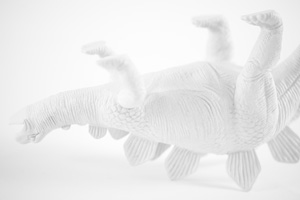
CIBELE VIEIRA | Senseless
Issue 05
Senseless started as a natural response to recent upheavals in my life. Last year I lost my father after an 11-year battle with cancer – an event that brought home the reality of our ephemeral nature. Then came the economic turmoil that brought so many of us, including myself, face to face with the struggle to survive.Overwhelmed, I kept to my studio, searching for a new project as a way to come to grips with my new reality. Although things looked the same, they did not mean the same things as before.
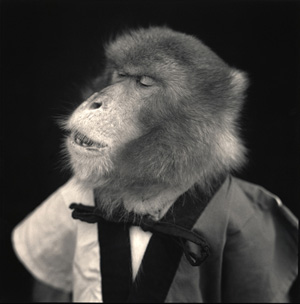
HIROSHI WATANABLE | Suo Sarumawashi
Issue 05
Monkey dancing, known as Sarumawashi in Japanese, evolved over 1,000 years, beginning as a religious ritual to protect warriors’ horses, and growing into a form of festival entertainment performed on city streets, in temples, and at imperial courts across the country.A group of culturally conscious individuals brought the art form back from the brink of extinction; Sarumawashi survives today, alongside Noh and Kabuki, as one of Japan’s oldest and most traditional art forms.
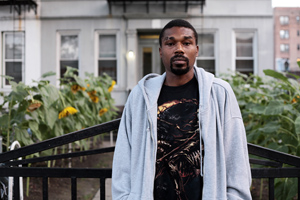
GRAHAM LETORNEY | Brown’s Nightmare
Issue 05
Kevon Brown was hospitalized after he had allegedly been beaten by police officers on the night of Friday, August 14, 2009. I arrived moments later as he was recovering from a seizure the reported beating had induced. I tell this story as his neighbor. For me, doing so represents both a need to react and a need to wave a red flag. The first step toward understanding the events of that Friday night is to listen to Kevon’s interview (above). This conversation was recorded early Tuesday morning, August 18, twenty feet from where the incident occurred on Lenox Road, between Flatbush and Bedford Avenue, Brooklyn. The morning of the interview was warm and unusually calm.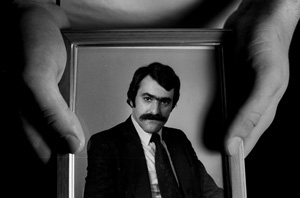
DOMINIC NAHR | The Family Connection
Issue 05
The walls that protect my father’s emotions, heart and soul are fortified and high. I was planning to see him in New York as he was passing through on a business trip in 2005. I had not seen him for months. Then his mother, Christa Nahr died March 15 of that year. We both traveled instead to Freiburg, Germany, where her funeral was to be held.This story is about my father and the twenty-four hours I spent with him back home in the southern German countryside.
JOHN COMERFORD | Icons Among Us
Issue 05
Seven years of my life were defined in a single night in 1983, when I snuck out of boarding school to attend a Grateful Dead concert on a crisp fall afternoon. That performance sent me in a direction that would carry me to the very heart of improvisational American music.The high wire act of Jerry Garcia’s improvisational rock guitar was a gateway to other types of “in the moment” virtuoso musicianship.

CHARLES HARBUTT | Metaphoros
Issue 05
I was born nearsighted, or myopic. Everything more than a few inches from my face was a blur with little detail. I did not know there was anything unusual about it. I thought everyone saw the world that way. Myopia made every day an adventure. Wow, was that a bear coming in the front door? Ah, no, it was just mom in her fur coat. Every moment was full of possibilities and I had to figure out what was actually going on.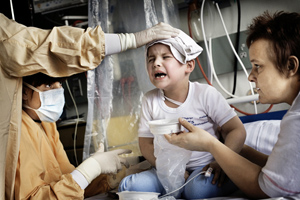
THOMAS LEKFELDT | A Star in the Sky
Issue 04
Vibe’s father, Michael, often said that he would catch the stars in the sky for Vibe if she asked him to. Now Michael tells her sister that Vibe herself has become one of the stars in the sky. This is a story of childhood cancer. A story of how a brain tumor slowly but surely killed a little girl. At the same time it is a story about a dear friend of mine, little Vibe, the girl with the tumor. During the year that I worked on this story I became very close with her family, but I never left my camera in my bag or at home. When I sat drinking coffee with Vibe’s father, Michael, the camera lay on the table. When I drove down to get pizzas for dinner together with Vibe’s sister, Laerke, I had the camera with me in the car. Even when I became a friend I was still a photographer.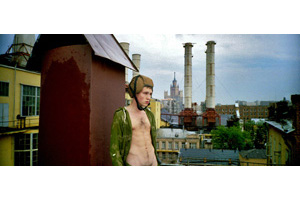
SLAVA MOGUTIN | Environmental Pictures
Issue 04
I took my best pictures while traveling. That is when I felt most inspired, free and alive, sometimes living out of my suitcase for months at a time, like a nomad with no specific goal in mind other than a constant change of settings and escape from the boring daily routine, schedule, regiment… And what a reward it is to come back home with a bagful of shot film! The moment of sharing your impressions and memories can be just as exciting as the journey itself.I might have some gypsy blood in my genes: my Dad couldn’t settle in one place for more than a couple of years, and throughout my childhood, my family was constantly moving around Russia from one corner of the country to another. Taking advantage of his job as a newspaper journalist, my father crisscrossed the mammoth Soviet empire and even traveled as far as Mongolia and Bulgaria.
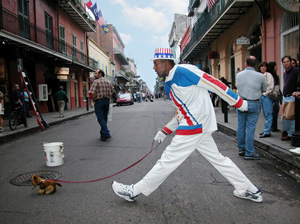
RAFAEL FUCHS | I am Amerikan
Issue 04
I am a collector. When I was a kid I used to collect stamps. I have stamps from all over the world.When I grew up I started collecting memories. I decided to take pictures since I knew that otherwise I’d forget.
I do it, at times obsessively. I am aware of it.
I wish, sometimes, that I were in the moment, Looking, not through the lens, Just enjoying and being amazed and captivated.
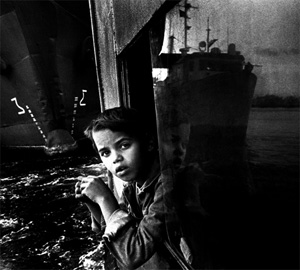
ERNESTO BAZAN | Cuba
Issue 04
In June, 1977, when I was seventeen years old and getting ready to graduate from high school in Palermo, Sicily, I had a dream in which I heard six words being spoken: “You need to become a photographer.” The next morning, I announced to my parents, who looked at me in disbelief, what my future profession was going to be. Far from wanting to sound like a preacher, I like to believe that it was God’s voice. Through this first revelation, I was given the chance to dedicate my life to photographing a broad range of feelings and emotions, the most simple and yet very universal conditions of our humanity: its sacredness in its basic and quintessential forms.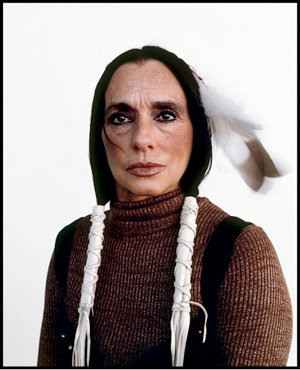
ERIC KLEMM | Silent Warriors
Issue 04
The image of the Indian from my childhood has been a heroic and romantic one. For me, like so many others growing up in Germany, there was an attraction and identification with North American Indian culture. When I immigrated to Canada, I eventually learned about the real story of the Indians, which is not romantic at all. I am picking up the thread where photographer Edward Curtis’ work ended. But now, nearly one hundred years later there are no more Great Warriors, their place taken by ordinary people who refused to give up.